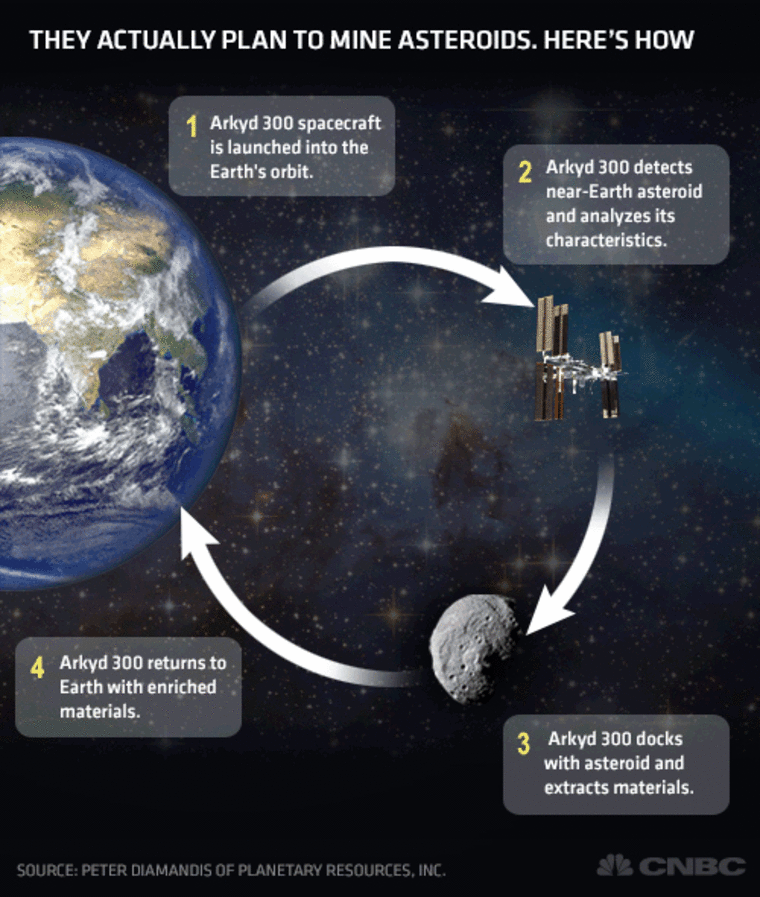
People who have seen the dramatic footage of a meteor crashing into central Russia's Ural mountains may be a little uneasy at the thought of 2012 DA14, a near-Earth asteroid that flies by Earth today. Peter Diamandis and Eric Anderson, are not among them.
The two men are the co-founders and co-chairmen of the Seattle-based company Planetary Resources, Inc., and to them, a near-Earth asteroid is not the stuff of modern disaster movies. Rather, it represents the next frontier in the mining of valuable resources.
Asteroids are composed of water and metals, and every time one passes by the Earth, the opportunity to obtain its resources escapes. The company's mission is to develop robotic spacecraft to analyze asteroids and mine them.
Streaming video: Watch asteroid 2012 DA14 buzz past Earth harmlessly
This may sound like a futuristic fantasy, but it's not. The company already has the backing of such heavy hitters as Larry Page and Eric Schmidt of Google, and "Avatar" director James Cameron, and according to Diamandis, the first mission will take place in 20 months.
The prospecting and mining of asteroids will rely on the use of the company's extremely light Arkyd-series spacecraft, which Diamandis characterized as "the smartphones of spacecraft." He said that they will remain in Earth's orbit to detect and analyze asteroids that come close enough. They will then dock with asteroids with the right characteristics, extract the desired materials, and return to earth.
Related story: Asteroid's close shave ranks among Earth's biggest hits (and misses)
"Our primary business is looking at these asteroids as a resource to benefit humanity, with three major value propositions," he said. "The first is many of these asteroids are rich in water, and water is valuable for hydrogen and oxygen, which is effectively rocket fuel. A 75-meter asteroid, if it's rich in volatiles, has enough water on board to fuel all 135 Space Shuttle missions."
The second category is platinum group metal-rich asteroids. "A single 500-meter LL chondrite has more platinum on it than has been mined in the history of humanity," he said. "Our goal is to go to asteroids, match their orbit, prospect them with cameras and imaging systems to clearly identify what they're made of, and determine the percentage of platinum and gold palladium."
The third category is the asteroid with the potential to hit the Earth. "Of the millions of asteroids out there orbiting the sun, some small percentage actually comes close to the Earth," he said. "A thousand or so are about a kilometer in size, the size that killed the dinosaurs. If you develop asteroid mining capability, you can alter their trajectory and deflect these asteroids almost for free. It's a side benefit."
Diamandis said that this capability is very close to reality. "We have contracts with DARPA [Defense Advanced Research Projects Agency] and NASA, and we're developing highly autonomous systems," he said. "We're flying hundreds of spacecraft over this decade, and we're doing prospecting in about five years."
Only time will tell whether Planetary Resources ends up saving humanity from an extinction-level event, or simply mines enough precious metals to raise the country's gross domestic product.